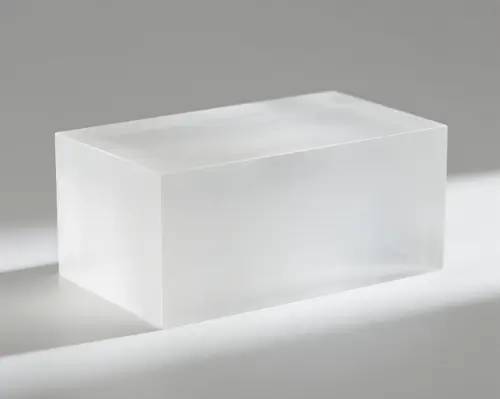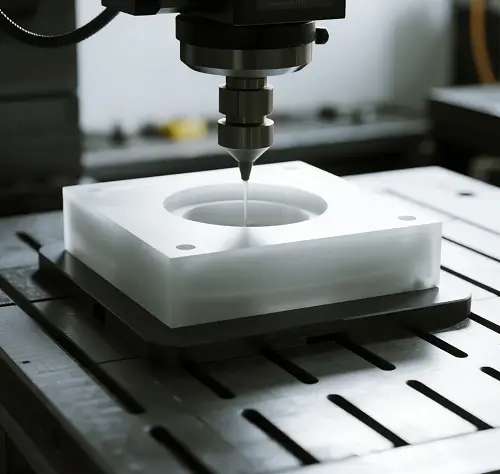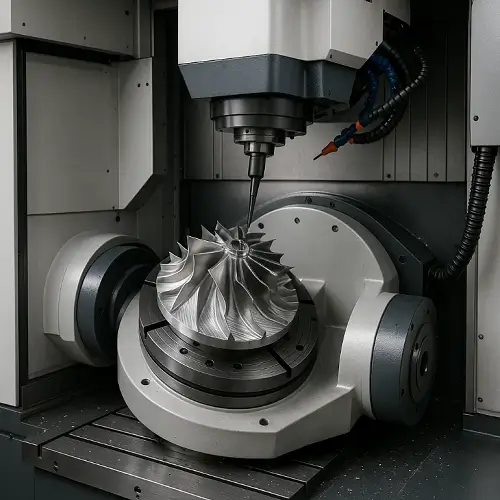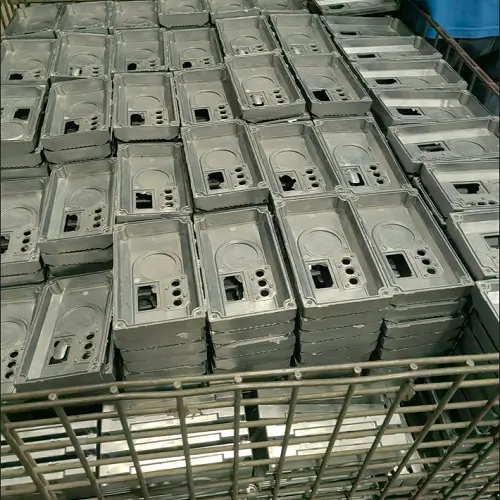This article explores acrylic, one of the most widely used materials in precision plastic manufacturing around the world. As a strong competitor to other plastics, acrylic is favored for its transparency, durability, and design flexibility. From retail displays to protective covers and electronic enclosures, this clear thermoplastic strikes an ideal balance between aesthetics and performance. However, clean edges, tight tolerances, and optical-grade surface finishes are not achievable with just any processing method. This article focuses on CNC machining for acrylic, a technique that fully unlocks the potential of this material to deliver parts that are both crystal-clear and dimensionally precise.

What Is Acrylic?
Acrylic, also known as PMMA (polymethyl methacrylate), is a transparent and lightweight plastic commonly used as a substitute for glass. Often referred to as “organic glass” or “acrylic sheet,” it offers excellent optical clarity, weather resistance, and superior formability. Available in a variety of colors and thicknesses, acrylic is the preferred choice for making display components, lighting diffusers, and protective shields. Compared to polycarbonate, acrylic is harder but less impact-resistant, which makes precision CNC machining essential for forming acrylic parts without compromising their strength or clarity.
Which Type of Acrylic Is Best for CNC Machining?
Acrylic used in CNC machining typically falls into two categories: cast acrylic and extruded acrylic.
Cast acrylic is made by pouring liquid acrylic into molds and allowing it to solidify. It offers excellent optical clarity, better surface hardness, and greater resistance to stress-induced cracking during machining. Although its sheet thickness may be less uniform, cast acrylic is ideal for high-precision applications.
Extruded acrylic, on the other hand, is produced by pushing the material through a mold. This process creates sheets with more consistent thickness and lower cost, but the material is softer and more prone to chipping or melting under high-speed machining.
For CNC machining, cast acrylic is generally the better choice, especially for parts requiring tight tolerances, smooth surfaces, and a clear finish.
Why Choose CNC Machining for Acrylic?
CNC machining is the preferred method for producing custom acrylic parts with complex geometries and high accuracy. Unlike laser cutting, which may cause discoloration or melting on thicker sheets, CNC machining allows precise material removal without thermal damage. This ensures not only clean outer edges but also intricate internal features such as slots, grooves, chamfers, and threaded holes.
CNC machining also offers exceptional flexibility, making it ideal for rapid prototyping, small-batch production, or iterative design changes. Whether a single beveled panel or a full batch of dimension-critical components is needed, CNC delivers repeatable quality with tight control over every detail. JeekRapid consistently holds tolerances within ±0.05 mm for acrylic parts, including those with complex, multi-surface geometries.
Another key advantage is that CNC machining handles thicker acrylic stock with ease, enabling structural integrity not achievable with laser cutting or 3D printing. The resulting edge quality and transparency are outstanding—especially when paired with post-processing like flame polishing or buffing.
Common CNC Operations for Acrylic
-
CNC Milling: Used for flat sheets or blocks to create pockets, grooves, and edge profiles.
-
CNC Turning (Lathe Machining): Suitable for cylindrical or round acrylic parts like tubes, knobs, or optical components.
-
CNC Drilling: Enables precise creation of holes for fasteners, lighting, or fluid applications.
-
Engraving and Slotting: Ideal for signage, displays, or decorative elements.
Each operation requires optimized speeds and feed rates to avoid chipping or melting. JeekRapid’s experienced team ensures that each job is run with the best parameters for both quality and efficiency.
Applications of CNC-Machined Acrylic
-
Retail and Exhibitions: Display stands, signage, donation boxes, and product showcases
-
Medical Equipment: Transparent panels, sample covers, and cleanroom components
-
Consumer Electronics: Light guides, protective covers, and indicator lenses
-
Industrial Equipment: Machine guards, control panels, and inspection windows
-
Architecture and Interior Design: Furniture elements, light diffusers, and design features
Thanks to its clarity and rigidity, acrylic is often chosen in situations where glass is too fragile or heavy, and where both appearance and function are equally important.

CNC Machining vs. 3D Printing vs. Injection Molding for Acrylic
| Feature | CNC Machining | 3D Printing (SLA/FDM) | Injection Molding |
|---|---|---|---|
| Material Used | Solid acrylic sheets or blocks | Resin-based or filament substitutes | Moldable acrylic (PMMA pellets) |
| Surface Finish | Excellent, optically clear | Layered texture, polishing needed | Smooth, mold-defined |
| Tolerances | ±0.05 mm or better | ±0.1–0.2 mm | ±0.05 mm to ±0.1 mm |
| Volume Suitability | One-off to medium batches | Rapid prototyping | Mass production |
| Setup Cost | Low to moderate | Low | High (due to mold cost) |
| Lead Time | 2–5 days for most parts | 1–2 days | 3–4 weeks (mold + production) |
| Best Use | Functional prototypes, clear parts | Conceptual models | High-volume fixed designs |
For those needing small quantities of clear, dimensionally accurate acrylic components, CNC machining provides the best balance—without the high tooling costs of molding or the surface limitations of 3D printing.
JeekRapid: Your Trusted Partner for Acrylic CNC Services
JeekRapid specializes in high-precision acrylic CNC machining for clients across industries. With complete in-house capabilities, JeekRapid offers flexible production volumes, tight tolerances, and excellent surface quality—even for highly complex parts. Whether you need a single prototype, a batch of medical display windows, or a full run of commercial components, JeekRapid delivers reliable results quickly.
Every acrylic part undergoes rigorous quality checks, including visual inspection, dimensional verification, and surface clarity assessment. JeekRapid also provides value-added services such as flame polishing, ultrasonic cleaning, and labeling to meet end-use requirements.
With no minimum order quantity, global shipping options, and a team of experienced CNC programmers and machinists, JeekRapid makes it easy to bring your acrylic designs to life—with the clarity and precision you can trust.
Request Quote to get started on your next acrylic CNC machining project.
Frequently Asked Questions (FAQ)
1: What is the maximum thickness of acrylic JeekRapid can machine?
JeekRapid can machine acrylic sheets up to 50mm thick with consistent dimensional accuracy. For thicker parts or bonded assemblies, custom solutions are also available.
2: Can CNC machining produce optically clear acrylic parts?
Yes. With the right tooling, cutting parameters, and post-processing (such as flame polishing or buffing), JeekRapid delivers optical-grade transparency on cut edges and surfaces.
3: Is cast or extruded acrylic better for machining?
Cast acrylic is generally preferred due to its hardness, clarity, and resistance to heat during machining. Extruded acrylic is usable but more prone to chipping or melting.
4: How fast is the turnaround for acrylic CNC parts?
Most acrylic CNC orders are completed within 2–5 business days, depending on complexity and quantity. Expedited services are also available upon request.
5: Can JeekRapid engrave logos or markings on acrylic?
Absolutely. CNC engraving and surface etching can be performed with high precision, and custom logos or serial numbers can be added to parts during the machining process.
6: Are there color options for CNC acrylic parts?
Yes. JeekRapid can source and machine clear, tinted, colored, or frosted acrylic sheets. Let us know the desired appearance when submitting your design.
7: How does CNC acrylic compare to laser-cut acrylic?
CNC acrylic machining provides better edge quality on thicker parts and supports complex 3D features like pockets or threaded holes. Laser cutting is faster for simple 2D profiles but may cause heat damage or fogging on edges.
8: Is there a risk of cracking during machining?
Cracking is rare when using cast acrylic and proper tool settings. JeekRapid minimizes risk by optimizing feeds, toolpaths, and cooling for each job.
9: Can JeekRapid polish the edges of machined acrylic?
Yes. JeekRapid offers flame polishing and mechanical polishing options to restore full clarity to machined edges.
10: Does JeekRapid support international shipping?
Yes. JeekRapid serves global clients with fast and reliable shipping options, including express delivery for urgent acrylic parts.


